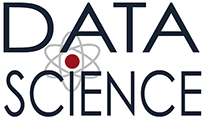Watch the lecture on the YouTube channel of the master.
Speaker: Prof. Kai Polsterer - Heidelberg Institute for Theoretical Studies (HITS)
Abstract: The amount, size, and complexity of astronomical data-sets is growing rapidly in the last decades. Now, with new technologies and dedicated survey telescopes, the databases are even growing faster. Besides dealing with poly-structed and complex data, sparse data has become a field of growing scientific interest. By applying technologies from the fields of computer sciences, mathematics, and statistics, astronomical data can be accessed and analyzed more efficiently. A specific field of research in Astroinformatics is the estimation of the redshift of extra-galactic sources, a measure of their distance, by just using sparse photometric observations. Observing the full spectroscopic information that would be necessary to directly measure the redshift, would be too time consuming. Therefore building accurate statistical models is a mandatory step, especially when it comes to reflecting the uncertainty of the estimates. Statistics and especially weather forecasting has introduced and utilized proper scoring rules and especially the continuous ranked probability score to characterize the calibration as well as the sharpness of predicted probability density functions.
This talk presents what we achieved when using proper scoring rules to train deep neural networks and to evaluate the model estimates. We present how this work led from well calibrated redshift estimates to an improvement in statistical post-processing of weather forecast simulations. The presented work is an example of interdisciplinarity in data-science and how methods can bridge between different fields of application.
Short bio: Dr. Kai Polsterer is a leader in the rapidly growing field of AstroInformatics, which combines Astronomy and Computer Science expertise to tackle the problems posed by astronomical big data from upcoming multi-wavelength surveys. From 2013 he leads the AstroInformatics Junior Research Group at the Heidelberg Institute for Theoretical Studies, where he has (between other things) been developing techniques to compute phometric redshifts, classify radio sources and encode time series. He is also a long-standing member of the International Virtual Observatory Alliance and has led the software development effort for the Lucifer instrument at the Large Binocular Telescope.
Download the poster.







